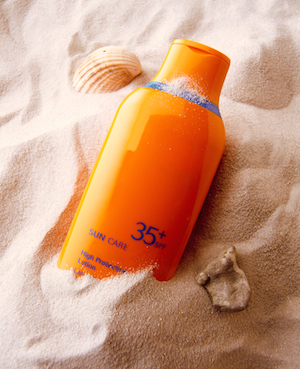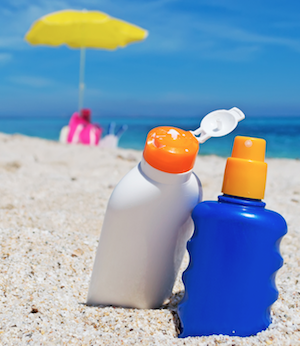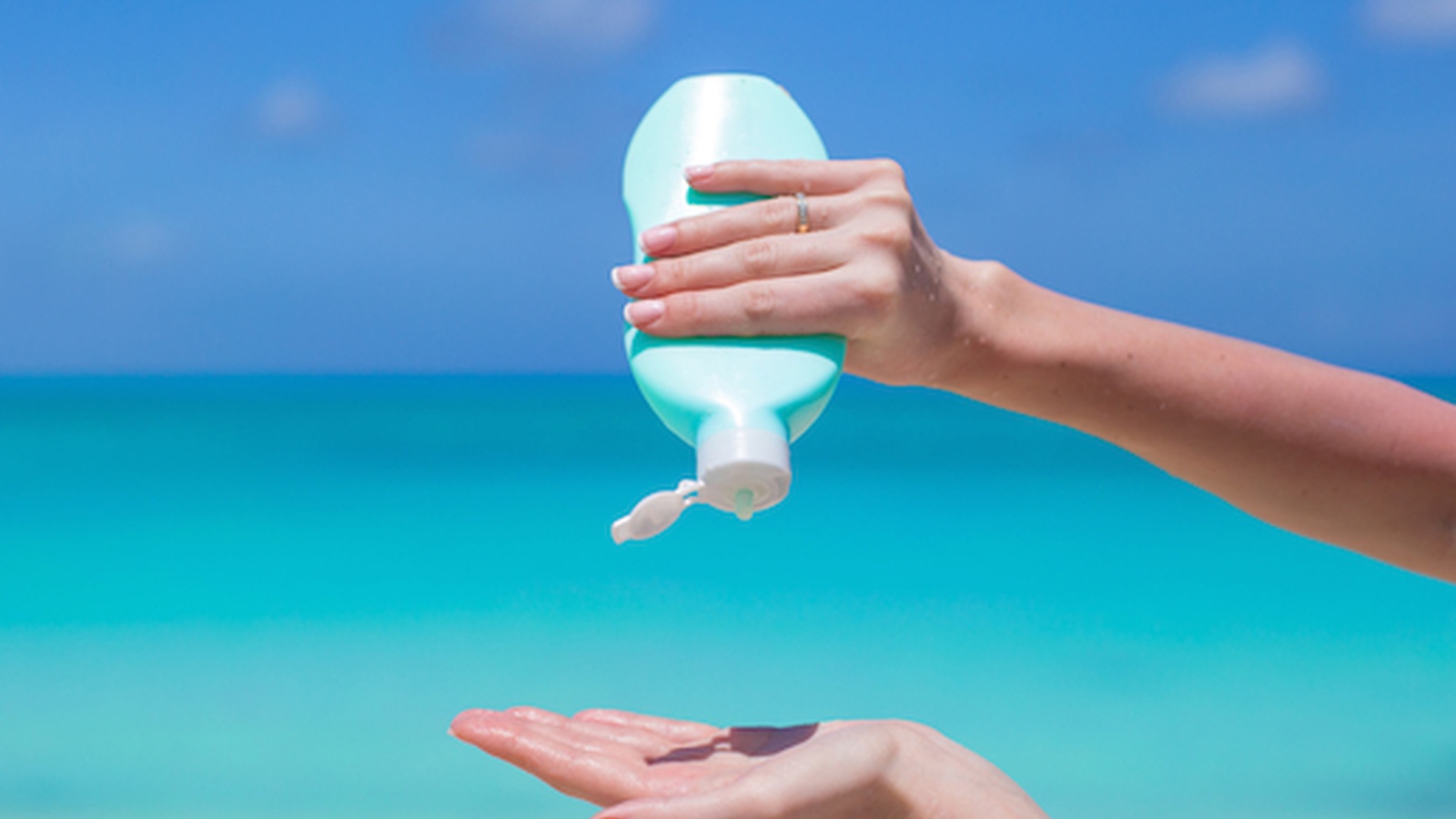7 Tips For Fun In The Sun!
Packing for your next vacation or day in the sun? EWG thinks these items should never make it into your suitcase, beach bag or backpack.
1. No Spray Sunscreens
Given the ease of applying them on squirming kids and hard-to-reach areas, these super-popular aerosolized sunscreens may seem like a dream come true. But they may pose serious inhalation risks. They certainly make it too easy to apply too little or miss a spot. Even though the Food and Drug Administration has expressed concern about the safety and efficacy of spray sunscreens, companies continue to turn them out.
 2. No Super-High SPFs
2. No Super-High SPFs
Products with sky-high SPFs may protect against sunburn but could leave your skin exposed to damaging UVA rays. SPF stands for “sun protection factor,” and refers only to protection against UVB radiation, which burns the skin. It has little to do with protection from sun’s UVA rays, which penetrate deep into the skin, suppress the immune system, accelerate skin aging and may cause skin cancer.
Fifteen percent of the sunscreens evaluated in EWG’s 2014 sunscreen guide boasts SPFs higher than SPF 50+. These high-SPF products may give people a false sense of security, tempt them to stay in the sun too long, suppress sunburns but upping the risk of other kinds of skin damage. The FDA is considering limiting SPF claims to 50+, as is done in other countries.
EWG recommends that consumers avoid products labeled with anything higher than SPF 50 and reapply sunscreen often, regardless of SPF.
3. No Oxybenzone
Commonly used in sunscreens, the chemical oxybenzone penetrates the skin, gets into the bloodstream and acts like estrogen in the body. It can trigger allergic reactions. Data are preliminary, but studies have found a link between higher concentrations of oxybenzone and health harms. One study has linked oxybenzone to endometriosis in older women; another found that women with higher levels of oxybenzone during pregnancy had lower birth weight daughters. More than 40 percent of all beach and sport sunscreens in this year’s guide contain oxybenzone.
4. No Retinyl Palmitate
When used in a night cream, this form of vitamin A is supposed to have anti-aging effects. But on sun-exposed skin, retinyl palmitate may speed development of skin tumors and lesions, according to government studies. Why is this “inactive ingredient” allowed in sunscreens intended for use in the sun? Good question.
The FDA has yet to rule on the safety of retinyl palmitate in skin care products, but EWG recommends that consumers avoid sunscreens containing this chemical. Twenty percent of the sunscreens, and 12 percent of SPF-rated moisturizers in this year’s guide contains retinyl palmitate.
 5. No Combined Sunscreen/Bug Repellents
5. No Combined Sunscreen/Bug Repellents
Skip products that combine bug repellent with sunscreen. Why? For starters, bugs are typically not a problem during the hours when UV exposure peaks. Also, sunscreen may need to be reapplied more frequently than repellent, or vice versa. We recommend that you avoid using repellents on your face, too. Studies suggest that combining sunscreens and repellents leads to increased skin absorption of the repellent ingredients.
EWG recommends that you skip these products.
6. No Sunscreen Towelettes Or Powders
FDA’s sunscreen rules bar sunscreen wipes and powders. But some small online retailers are still offering towelettes and powders. Don’t buy them. Why? Dubious sun protection. Besides, inhaling loose powders can cause lung irritation or other harm…
7. No Tanning Oils
Tanning oils are simply a bad idea. If they contain sunscreen ingredients, the levels are always very low and offer little, if any, sun protection. Don’t buy products with SPF values lower than 15, nor those without either zinc oxide or avobenzone for UVA protection.
What Are Your Tips For Sun Safety?
Take the stress out of cooking with 21-days of guided meal plans, shopping lists, and nutrition support. You’ll find all of this, and more, in our signature Clean Eating Program.

